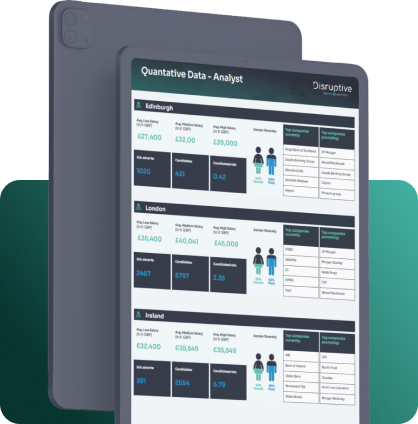During the Beyond Labels miniseries we’ve been exploring a range of diverse identities and experiences. In Episode 3 we were joined by Paul Bergin, the Managing Director of the Public Safety Group at Sopra Steria, who shared his story as a professional with ADHD. He explained how that’s affected his working life and shared some advice for other neurodivergent people in the workplace. Here’s what he said:
“If somebody says, ‘What are your strengths and weaknesses?’ or ‘What do you bring to the organisation?’ I tell them that I bring infectious energy and enthusiasm at a level unparalleled by my peers and colleagues. I bring fresh thinking every hour of every day without fatigue and without stopping. I don’t get tired of new ideas. The more stress you throw at me, the better I get. I’m antifragile; I do not run down under stress, I get better.
I’m also great at unstructured thinking. If you spend a career being told what to do, a series of structures starts to limit your thinking. Let’s say you get promoted, and you start running a small team. Suddenly you hit a point where strategy and innovation and free-thinking is what you do every day. Most neurotypical people have been rigorously training to do as they’re told and live in a structure, and they’re really good at it. When they suddenly flip and become leaders who have to be open, inspired, have dreams and visions – they can’t do it. There’s a massive difference between people who thrive in ordered structures and creative or strategic thinkers who naturally possess those skills.
I’m the opposite. I’m somebody who struggled through their early career because I was being forced to do things that went against my genes, but suddenly I popped out thinking, ‘Wow, I’ve got through that hard stuff. Now it’s pretty easy. Now I’m in my element where the strategic thinking is unobstructed.’ I bring a very different perspective. When our CEOs or leaders want more innovation in our organisations, it’s there, but it’s being suppressed by our structures and processes.
When it comes to working with my ADHD, I have to add structure to keep me focused on simple things. Most people work from their inboxes, but I can’t see it on my desktop or have notifications for it. I decide what I’m doing and then do it. I work from a simple principle of starting my day by planning. One thing I do is give myself a period of time every morning to think about what’s bothering me today, and the three things that are usually on top of my mind are nearly always the things I need to do. More often than not they’re the most important things to the business too.
When it comes to my emails, if there’s 15 emails saying, ‘I need you to look at this’ if you leave them all day, nine times out of 10, somebody else solves them for you. My general rule is that if it’s coming from your level or above, it probably needs looking at, but if it’s coming from below your level, it probably doesn’t, because they’ll manage it themselves. Otherwise you create a dependency culture where you end up doing things for the team that they should be learning to do themselves.
I find that the less technology you distract yourself with, the better. My phone has no notifications at all. I have an app on there that switches the phone off for a period of time, and if you don’t use it it will grow a virtual forest for you. That’s nice. I also set timers for how long I’m allowed to look at my phone during the day. I’ve allowed myself enough distractibility to keep going and keep my dopamine higher, but not so much that I don’t get stuff done.
There’s also things one can do to allow artificial structure. The key with ADHD is that while you know intellectually how to structure somebody else, I struggle to do it myself. I need external rules to tell me how to automate. That’s why I create those rules around me. They’re the kind of structures you can use within technology or outside technology, but particularly if you have ADHD, you have to put external structures and clocks in every room to help you manage time effectively.”
To learn more from Paul, tune into Episode 3 of the Beyond Labels Podcast here.


How Disruptive is your Leadership Hiring?
Find out where your management team’s weaknesses are and how you could improve your hiring strategies with this free 5 minute questionnaire.
Contact Us
"*" indicates required fields
